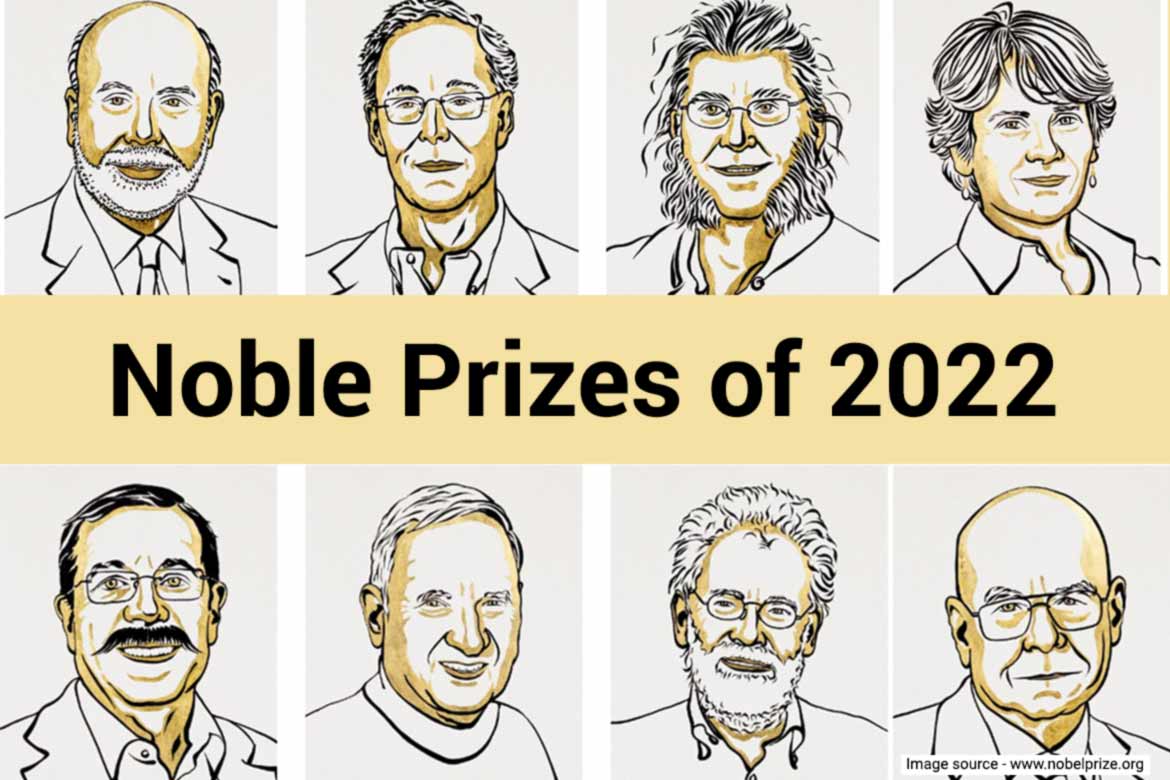On October 10, 2022, the announcements for the 2022 Noble Prize were finished. In 6 fields, total 11 recipients were there this year. The Nobel Prize was given out for the first time in 1901, and since then, 975 people and organisations have received it 609 times. The 2022 Nobel Prize winners will receive 10 million Swedish Kronor (INR 7,24,39,557). In this article, we will see the list of Nobel Prize 2022 laureates and their contribution in respective fields.
Nobel Prize in Chemistry 2022:
Carolyn R Bertozzi, Morten Meldal and K Barry Sharpless have been awarded the Nobel Prize 2022 in Chemistry “for the development of Click Chemistry and Bioorthogonal Chemistry”.
Click Chemistry is a minimalistic form of chemistry in which molecular building blocks can quickly and efficiently snap together. It is a form of simple and reliable chemistry, where reactions occur quickly, and unwanted by-products are avoided.
Chemists frequently attempt to replicate the intricate chemical molecules seen in nature, and this has implications for the field of medicine, including how to identify and neutralise pathogens in cells. But this procedure could be difficult and drawn out.
Their contribution-
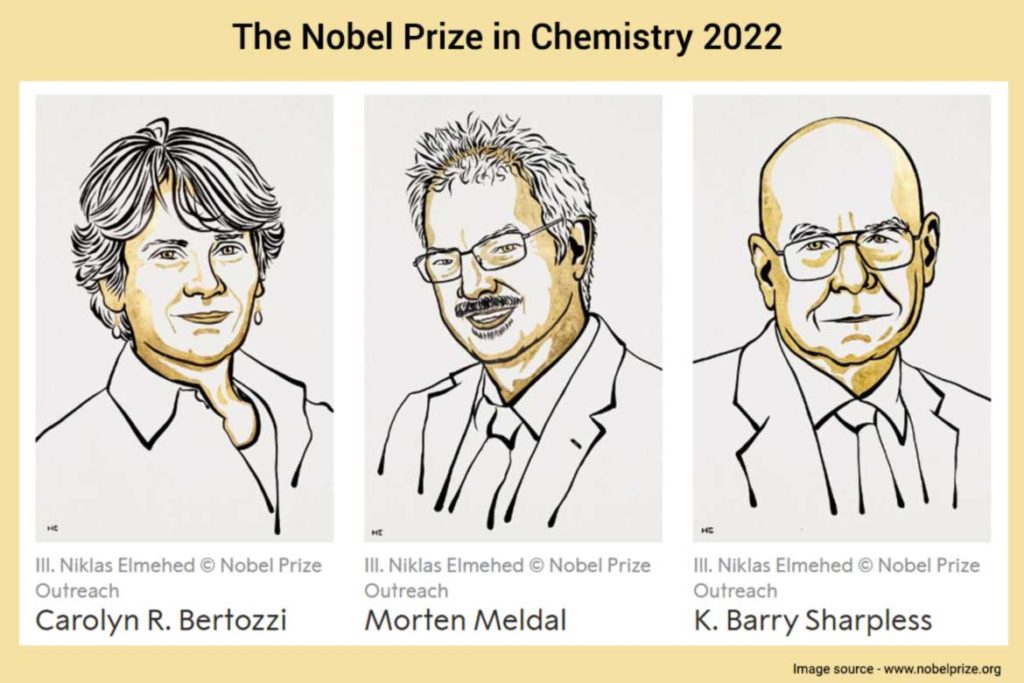
Read more: Falu in Grammy! Who is Falguni Shah, the Indian-American Grammy winner?
K Barry Sharpless
Sharpless (who won a second time) developed the term “click chemistry” and put a lot of effort into it. Barry Sharpless developed the idea of “click chemistry” around the year 2000. He discovered that it is simpler to link smaller molecules with complete carbon frameworks than it is to force carbon atoms, the building blocks of organic matter, to bond with one another. The key concept is to select straightforward reactions between molecules that have a “stronger intrinsic motivation” to bond together, leading to a quicker and less wasteful process.
Morten Meldal
The copper catalysed azide-alkyne cycloaddition was the crowning achievement of click chemistry in the 2000s, and it was produced independently by Meldal and Sharpless.
A triazole, a stable ring-shaped chemical structure that is a popular building block in medicines, dyes, and agricultural compounds, was discovered by Meldal to be produced when copper ions were added to a reaction between an alkyne and an acyl halide. By including copper ions, the reaction may be controlled to produce only one chemical. Today, the discovery of pharmaceuticals, the mapping of Deoxyribonucleic Acid (DNA), and the production of materials that are more suited for their intended use are only a few applications for this straightforward and efficient chemical reaction.
Carolyn R Bertozzi
In order to make glycans more visible, Carolyn R. Bertozzi wanted to attach fluorescent molecules to them. Glycans are a difficult-to-find type of carbohydrate found on the surface of cells that are essential to the immune system. The same azide that Meldal and Sharpless both employed was chosen by Bertozzi. The azide is safe to introduce in living things and avoids reacting with other cell components.
She created a different click chemistry process in 2004 that operated without poisonous copper and was secure for use in live cells. The work of Bertozzi is being used to discover glycans on the surface of tumour cells and to disarm their defence systems that render immune cells ineffective.
Clinical trials for this treatment are now being conducted on patients with advanced cancer. Additionally, scientists have started creating “clickable antibodies” that can be used to track tumours and precisely administer radiation dosages to cancer cells.
Nobel Prize in Physics 2022:
Recently, the Nobel Prize in Physics for 2022 was awarded to Alain Aspect, John F. Clauser and Anton Zeilinger “for experiments with entangled photons, establishing the violation of Bell inequalities and pioneering quantum information science”
Applications for quantum mechanics’ intangible effects are beginning to emerge. Today, a wide range of research is being done on quantum networks, computers, and secure quantum encrypted communication.
The fact that quantum mechanics permits two or more particles to coexist in an entangled state is a crucial aspect of this advancement. Even if two particles are far away, what happens to one of them in an entangled pair affects what happens to the other particle.
Their contribution-
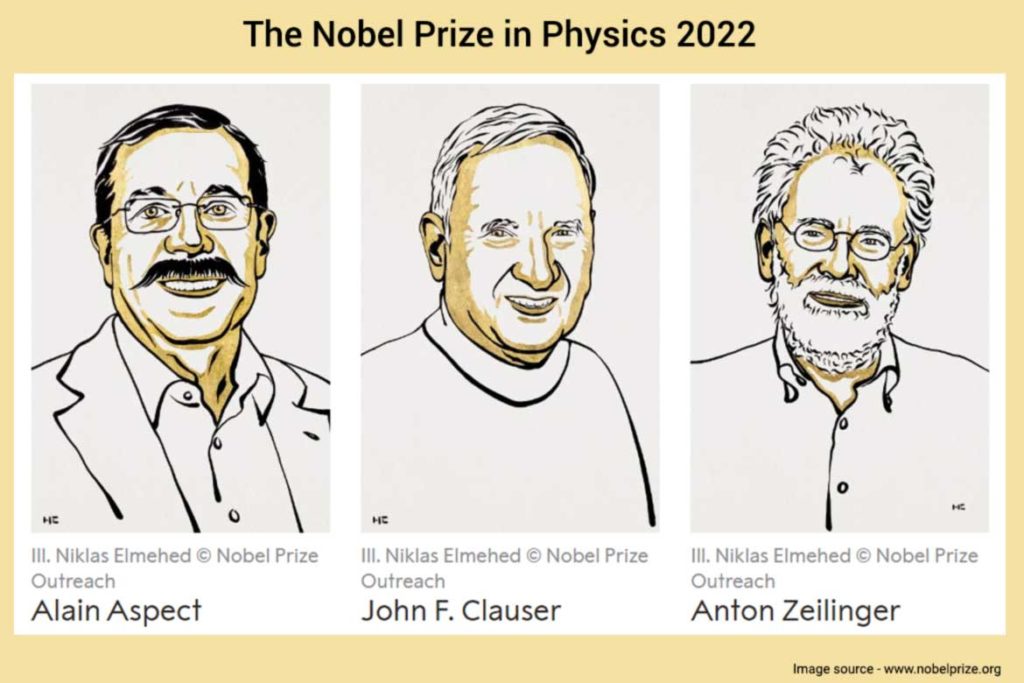
Read more: Nobel Prizes 2021: Here’s Is The List Of All Awardees; Know Their Contribution
John Clauser:
He further developed John Bell’s concepts, which resulted in a useful experiment. His measurements, which obviously violated Bell inequality, supported quantum theory at the time they were made. This indicates that a theory that incorporates hidden variables cannot displace quantum mechanics.
Alain Aspect
After John Clauser’s experiment, certain gaps were still there. The arrangement was created by Alain Aspect, who utilised it to close a significant gap. After an entangled pair had left its source, he was able to change the measurement settings, ensuring that the settings in place at the time the pair was released had no bearing on the outcome.
Anton Zeilinger
Hebegan to employ entangled quantum states using sophisticated techniques and extensive testing. His research team has also proven the existence of a phenomena known as quantum teleportation, which enables the remote transfer of a quantum state from one particle to another.
The Nobel Prize in Physiology/ Medicine 2022:
The Nobel Prize in Physiology or Medicine 2022 was awarded to Svante Pääbo “for his discoveries concerning the genomes of extinct hominins and human evolution”
His contribution-
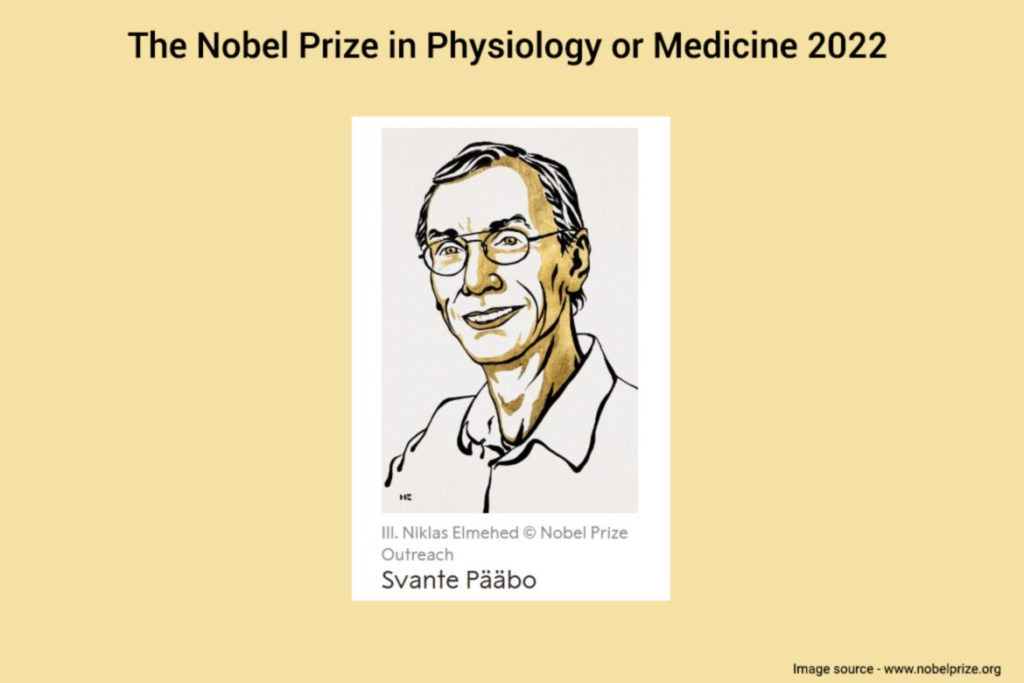
Several discoveries were made by Dr. Svante Pääbo in the creation of novel and inventive techniques for clean DNA extraction from thousands of years-old fossils and deciphering the genetic information contained in it.
It will aid in understanding how ancient gene sequences from extinct human ancestors affect modern humans’ physiology. For instance, the Denisovans gene EPAS1, which is common among modern Tibetans, gives an advantage for life at high altitudes. Our immune system’s reaction to diverse pathogens is influenced by Neanderthal genes.
He looked at ancient gene flow during human evolution and extinct hominins, which are relatives of modern humans. Additionally, it will contribute to the discipline of evolutionary biology’s recognition.
As a result of Dr. Pääbo’s research, a brand-new field of study known as Paleogenomics has emerged. It is the investigation and examination of genes from extinct or ancient creatures.
The Nobel Prize in Literature 2022:
The Nobel Prize for Literature 2022 has gone to French author Annie Ernaux, for, according to the Swedish Academy, “the courage and clinical acuity with which she uncovers the roots, estrangements and collective restraints of personal memory”.
Her contribution-
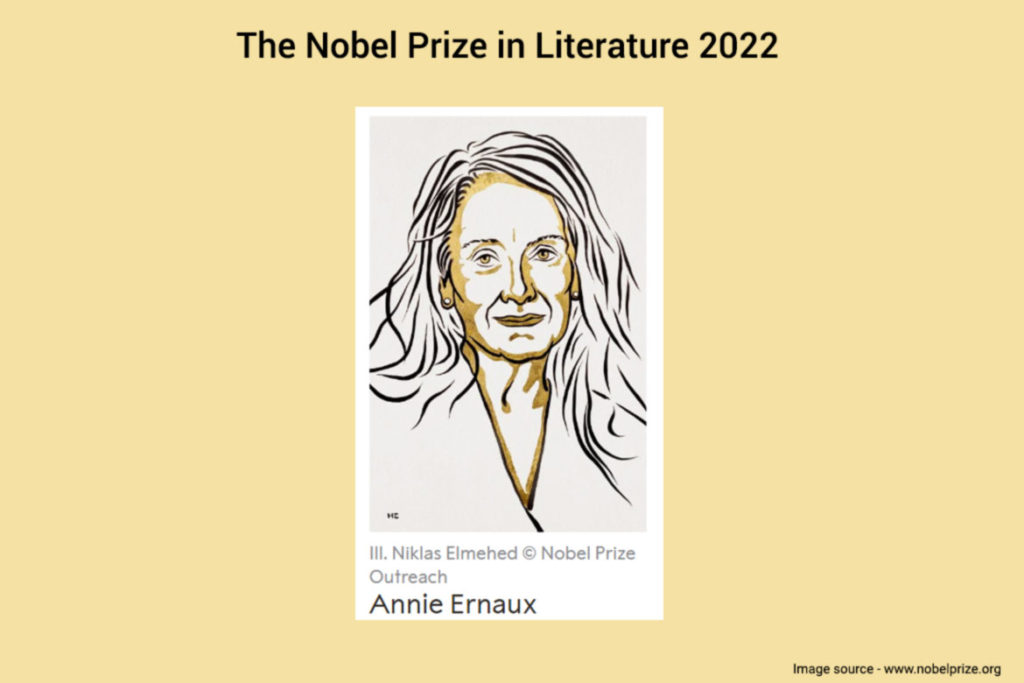
Ernaux, 82, has had a rapid rise in popularity in the English-speaking world since 2019, when Alison L. Strayer’s translation of her landmark work “The Years” made the Man Booker shortlist. After abortion rights were restricted in the US, her 2001 book “Happening,” about her illegal abortion in the 1960s, gained attention.
According to the Nobel citation, Ernaux meticulously mines her own memory and life experiences with “courage and clinical acuity” in her work, which covers a wide range of topics, including a history of France, her first sexual experience and the shame surrounding it, her mother’s illness and death, her abortion, and her class-related shame.
Her handling of her memories is frank but unadorned; she goes back to the moment she is writing about as completely as she can, depriving herself of the wisdom and benefit of hindsight, capturing the unadulterated vulnerability of the time. Many claim that she blurs the boundary between fiction and autobiography by using songs, catchphrases, and meals from the era she is writing about as anchors.
The Nobel Peace Prize 2022:
The award was announced by the Norwegian Nobel Committee in Oslo. It was jointly awarded to Belarusian human rights advocate Ales Bialiatski, the Russian human rights organisation Memorial, andtheUkrainian human rights organisation Centre for Civil Liberties.
Their contribution-
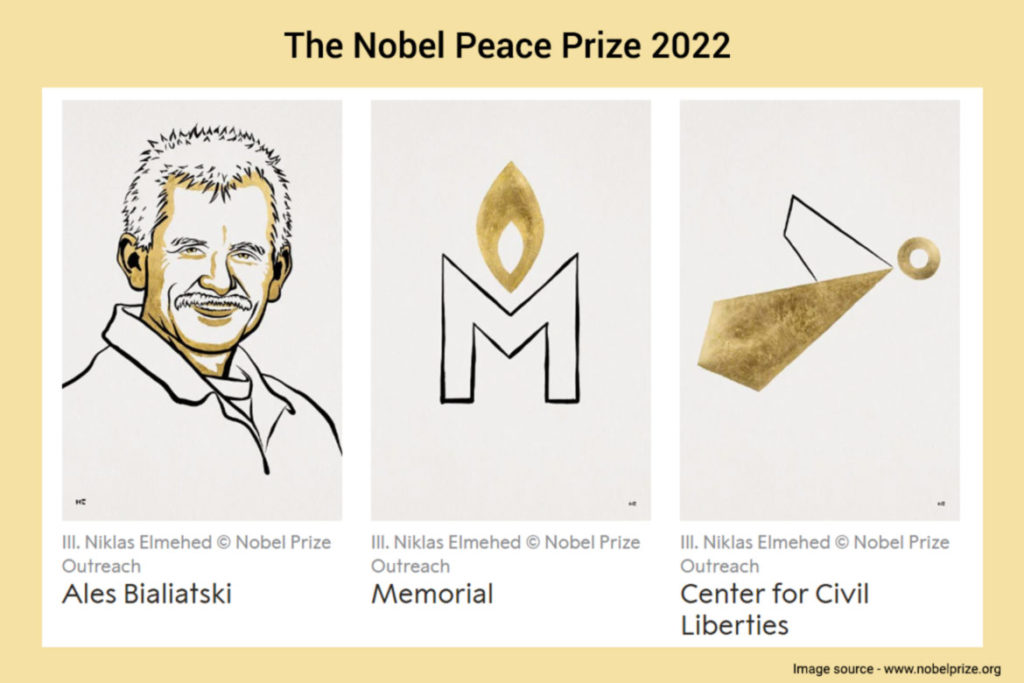
Ales Bialiatski:
In Belarus in the middle of the 1980s, Ales Bialiatski was one of the founders of the democratic movement.
In response to the contentious constitutional revisions that gave the president (Alexander Lukashenko) dictatorial powers, Bialiatski is also credited with creating the organisation Viasna (Spring) in 1996. He is the fourth recipient of the Nobel Peace Prize while incarcerated.
Russian Human Rights Organisation, Memorial:
To ensure that the victims of the brutality of the communist dictatorship would never be forgotten, human rights campaigners in the former Soviet Union founded the organisation in 1987.
It is considered as the largest human rights organisation in Russia, it assisted in the current information gathering on “political oppression and human rights breaches in Russia.”
Ukrainian Human Rights Organisation, Center for Civil Liberties:
The Center for Civil Liberties was established in Kyiv in 2007 “to advance democracy and human rights in Ukraine.”
The Center identifies itself as “one of the key actors in Ukraine, shaping public opinion and state policy, fostering the growth of civic participation, and actively participating in global networks and solidarity initiatives to advance human rights.”
The Sveriges Riksbank Prize in Economic Sciences in Memory of Alfred Nobel 2022:
The Royal Swedish Academy of Sciences has decided to award the 2022 Sveriges Riksbank Prize in Economic Sciences in Memory of Alfred Nobel to Ben S. Bernanke, Douglas W. Diamond and Philip H. Dybvig “for research on banks and financial crises.”
Their contribution-
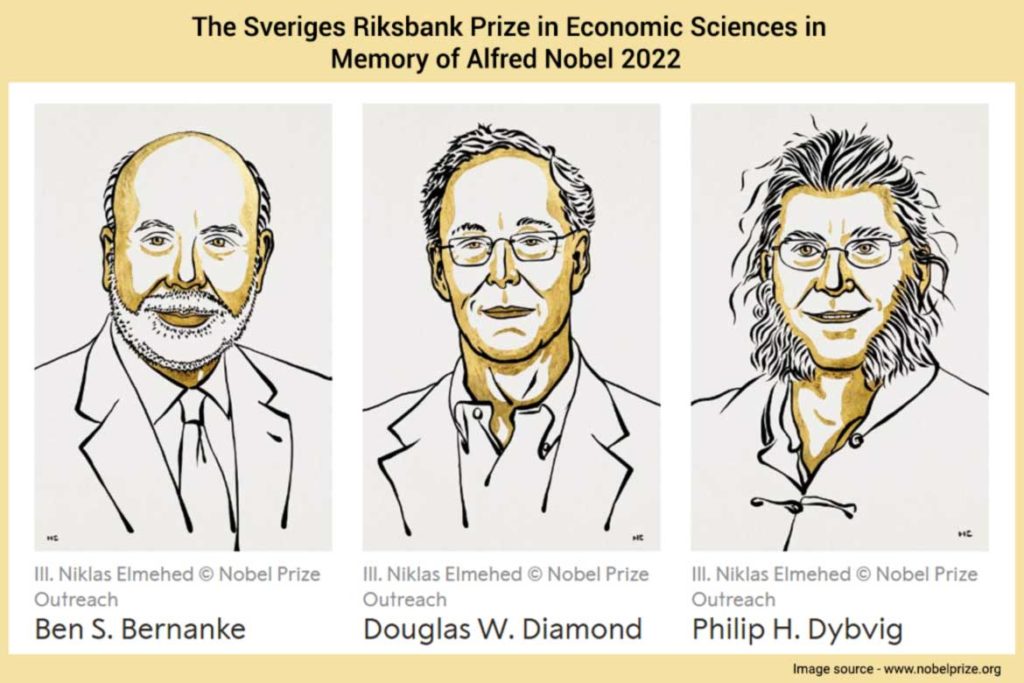
Ben S. Bernanke:
The worst economic catastrophe in recent history—the Great Depression of the 1930s—was analysed by Ben Bernanke. Bernanke showed through statistical analysis how the global downturn of the 1930s was mostly caused by failing banks.
Douglas W. Diamond and Philip H. Dybvig:
In order to explain why banks exist, how their place in society makes them susceptible to rumours of their impending collapse, and how society might minimise this vulnerability, Diamond and Dybvig collaborated to build theoretical models. These realisations serve as the cornerstone of contemporary bank regulation.
They offered deposit protection from the government as a remedy for banks’ vulnerability. Depositors won’t need to hurry to the bank as soon as reports of a bank run first surface if they are aware that the state has guaranteed their money.
Diamond also shown how banks serve a crucial social purpose. Banks are better suited to determining a borrower’s creditworthiness and ensuring that loans are used for wise investments because they act as middlemen between savers and borrowers.
